Training for a marathon can feel like a full-time job. Of course, you have the long runs on the weekend, but what else is taking so much time? You know, besides running 8 miles on a Wednesday? Look into a day in the life of an amateur marathoner. And see the support work required to keep an injury-prone runner logging miles 5 days a week, training for her 3rd marathon, and working toward her 10 year plan.
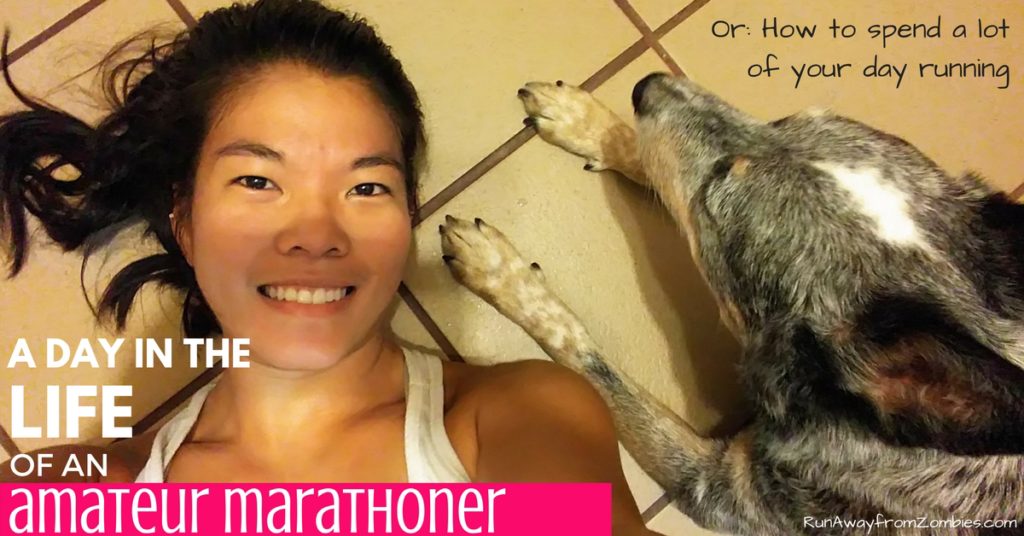
Day in the Life of an Amateur Marathoner
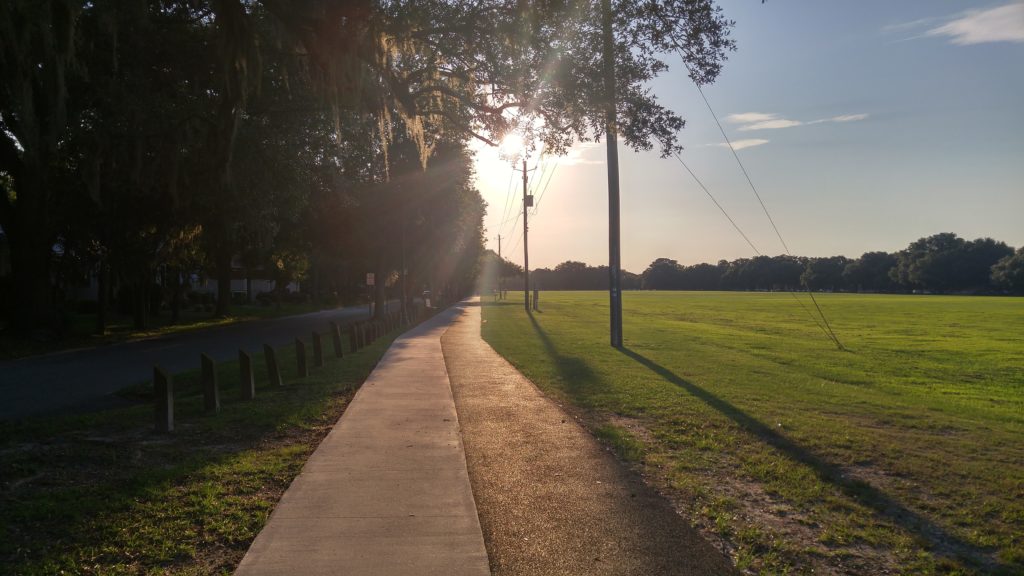
Morning at the park
Morning Routine
I wake up before or at 6AM with the Sleep Cycle App. The first 30 minutes is spent on chores and a breakfast of oatmeal with an egg, chia seeds, and a bit of cheese. I work an unpredictable schedule which dictates when I run. If I don’t have work, I spend an hour writing before I head out for my run. If I can skip writing and fit in a run, I do that. Otherwise, I run in the evening juggling it among work duties, dinner, thunderstorms, and the setting sun.
I run a predetermined distance and typically a predetermined route (Click here to read about the first 4 weeks of running mileage in-depth). If it’s 6 miles or longer I bring water. If it’s 9 miles or longer I bring mid-run fuel. Oakley, my dog, always runs a predetermined distance with me. As you can tell, I don’t like to make a lot of decisions preceding my run. I am much more successful if I can just follow the rules and GO.
During my cool-down walk, I do 3 to 4 running drills. At home I do squats, glute bridges, and planks. I make a smoothie with some added protein and sip on it while I soak my feet in ice water. After intense long runs, I take a lower-body ice bath.
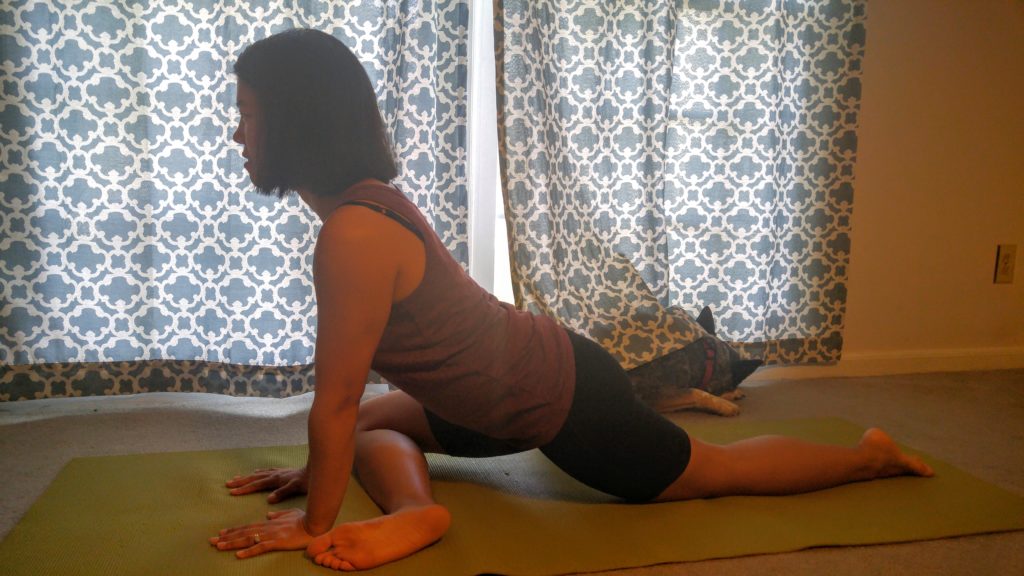
Pigeon Pose
Evening Stretches
Later in the evening I do stretches, my myofascial release home-exercises, use the foam roller, and maybe do some yoga. I do a minimum of 30 minutes, but typically it’s 60 minutes or more while I watch TV.
Tools and exercises (with affiliate links):
- Small, mostly inflated ball – to rest on tight spots on IT band, psoas, glute/piriformis
- Foam roller – roll calves and quads (and lots of other things!). I also rest on tight spots.
- Hard rubber ball – feet/plantar fascia
- Double pigeon/fire log pose for tight hips and piriformis
- Calf stretches
- Lizard/Dragon series for hips, hip flexors, hamstrings
- Foot stretches – weight-bearing and non weight-bearing.
I wear knee-length compression socks often. After long runs, I ice my knees. I wear my splints at night (although sometimes I remove them in the middle of the night).
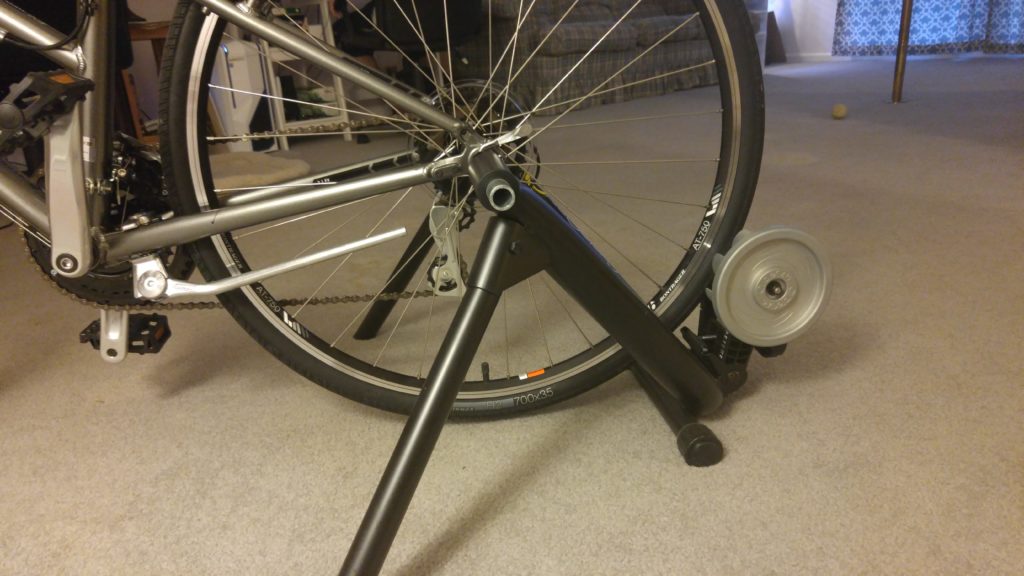
Bike on Trainer
Different Days
Tuesday I cross-train, waking up as early as needed to get 30 minutes on my bike. I place my bike on a trainer and can watch TV. My favorite to watch on the bike is American Ninja Warrior.
I try to get to the yoga studio for Yin yoga later that day. If I can’t, there is another opportunity later in the week or I do a long video session at home. Every other Friday I have a myofascial release session with my massage therapist.
Nutrition
When I was less busy, I would plan my meals, buy groceries, and cook every night. When I get busy, I might plan a couple of meals, but end up using the ingredients in other things.
I try to make sure I have healthy food available, a fridge full of good ingredients, and some easy frozen stuff. I pay attention to macro-nutrients, making sure to get some carbs, proteins, and fats in each meal. The freezer is full of frozen veggies and my fruit bowl is stocked.
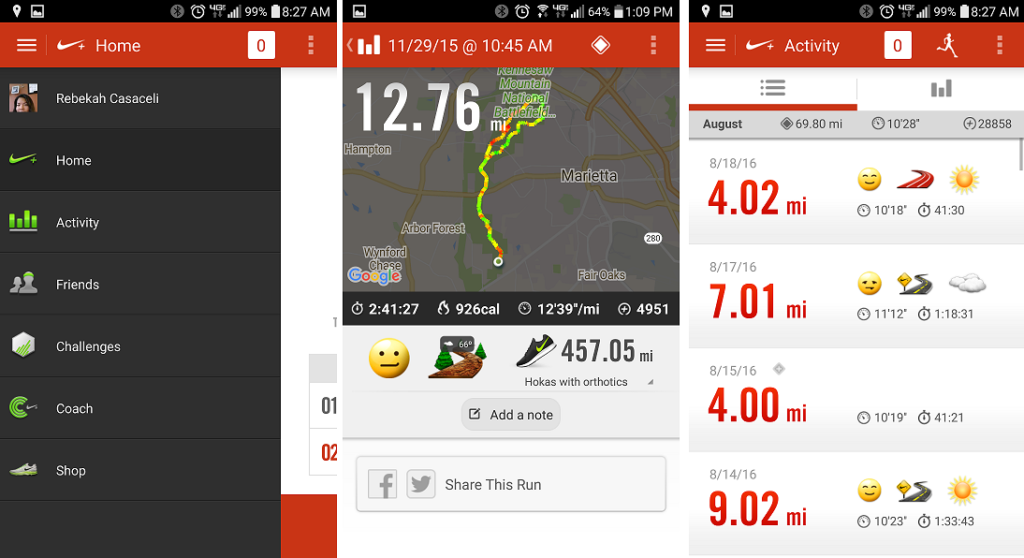
Nike+ Running App
Technology I use
After I’ve picked out a training plan, I put all the runs into my Google Calendar as a separate calendar (so they are easily hidden or looked at alone).
I have a recurring task to “Run” on my to-do list app. Putting it on my to-do list ensures that I remember to incorporate my run into the rest of the day’s tasks. If I see I have a lot on my plate, I can postpone less important tasks before I get overwhelmed.
I track my runs with the free Nike+ Running app on my Android phone. The app tracks distance, pace, shoe mileage, and notes.
IFTTT (If This Then That) app logs all of my Nike+ runs automatically into my Google Calendar as a second event. I can easily compare what the plan was vs what I actually did. This keeps me from telling myself that I’m following the plan, when I’m really cutting runs short or missing runs. It also helps me see patterns and change the training plan to deal with injuries or burnout.
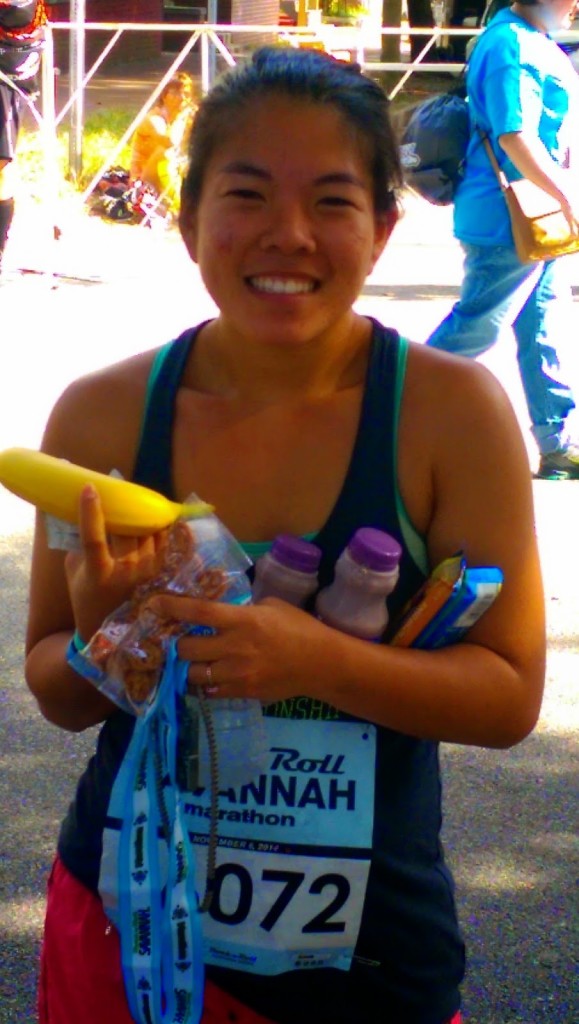
1st Marathon Finish
How is this different from the first 2 marathons?
More support work this time around. Besides strengthening and running drills, I’ve changed my myofascial release techniques. Previously I would use the massage stick and foam roller in a rough way, fighting tight knots in my legs. Now I’m much more gentle, and I still think as effective.
My yoga is also gentler, doing Yin instead of Vinyasa.
I must now be more consistent with my night splints and ice baths. I used to skip the cardio cross-training for an extra rest day, but now I’m able to support the extra work and gain its benefits.
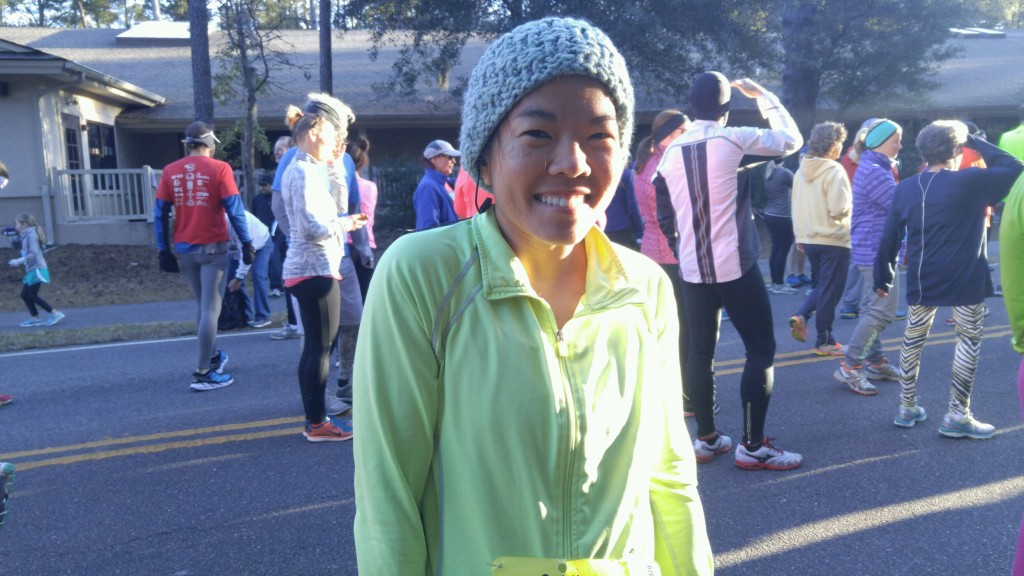
From February’s marathon
How do I think I can improve?
In the next few years, I’m interested in incorporating more strength training, pylometrics, and dynamic yoga. Maybe even get in some routine swimming. I definitely want to add tempo runs to the marathon training plan.
I’m also considering taking a year off from racing the marathon distance to do major experimentation on strengthening my feet, improving my running form, and gaining more rounded fitness.
Do you have to do all this?
Nope. There are people more talented, with less time, who are less injury-prone, and/or have more important things to do. I am none of those people.
Marathon training is my favorite time of the year.
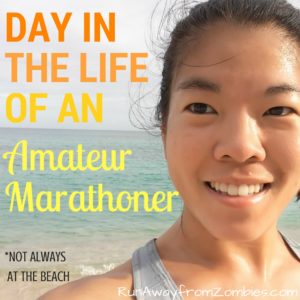
Share on social media!
Further Reading:
- Overhauling my Sleep Routine
- First Marathon Training, Pt 1
- 10 Things to Know Before Your First Marathon
- Running with an Unpredictable Schedule
- 10 Things to Do After a Run

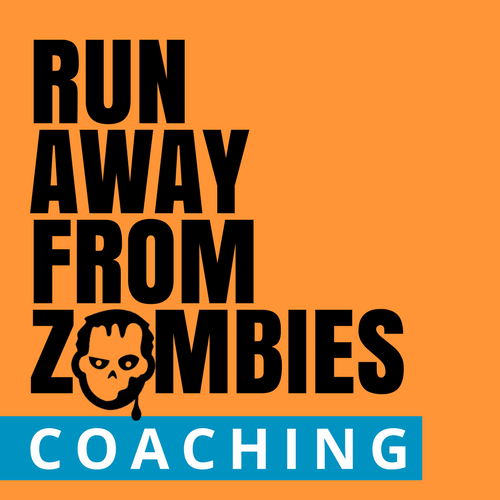
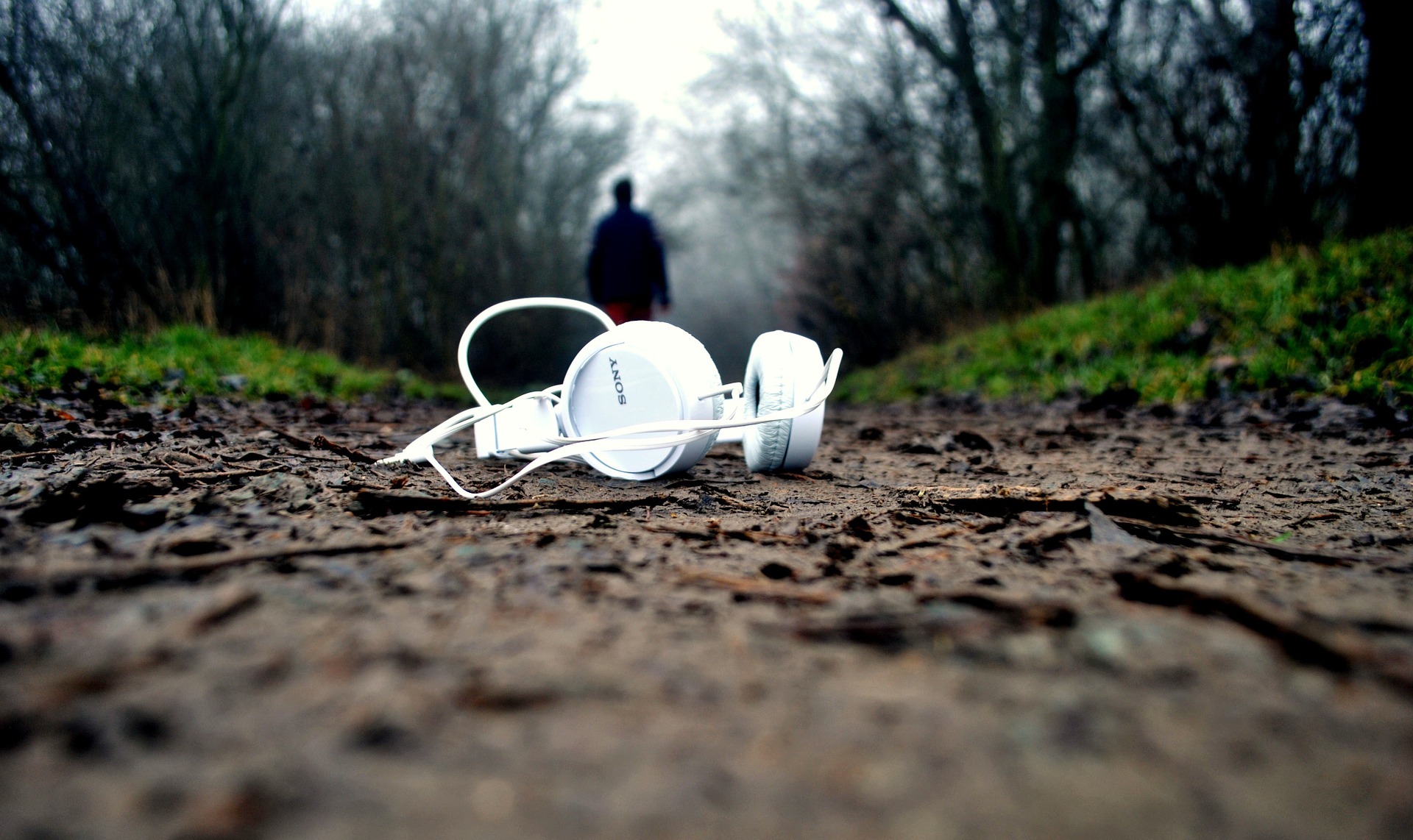

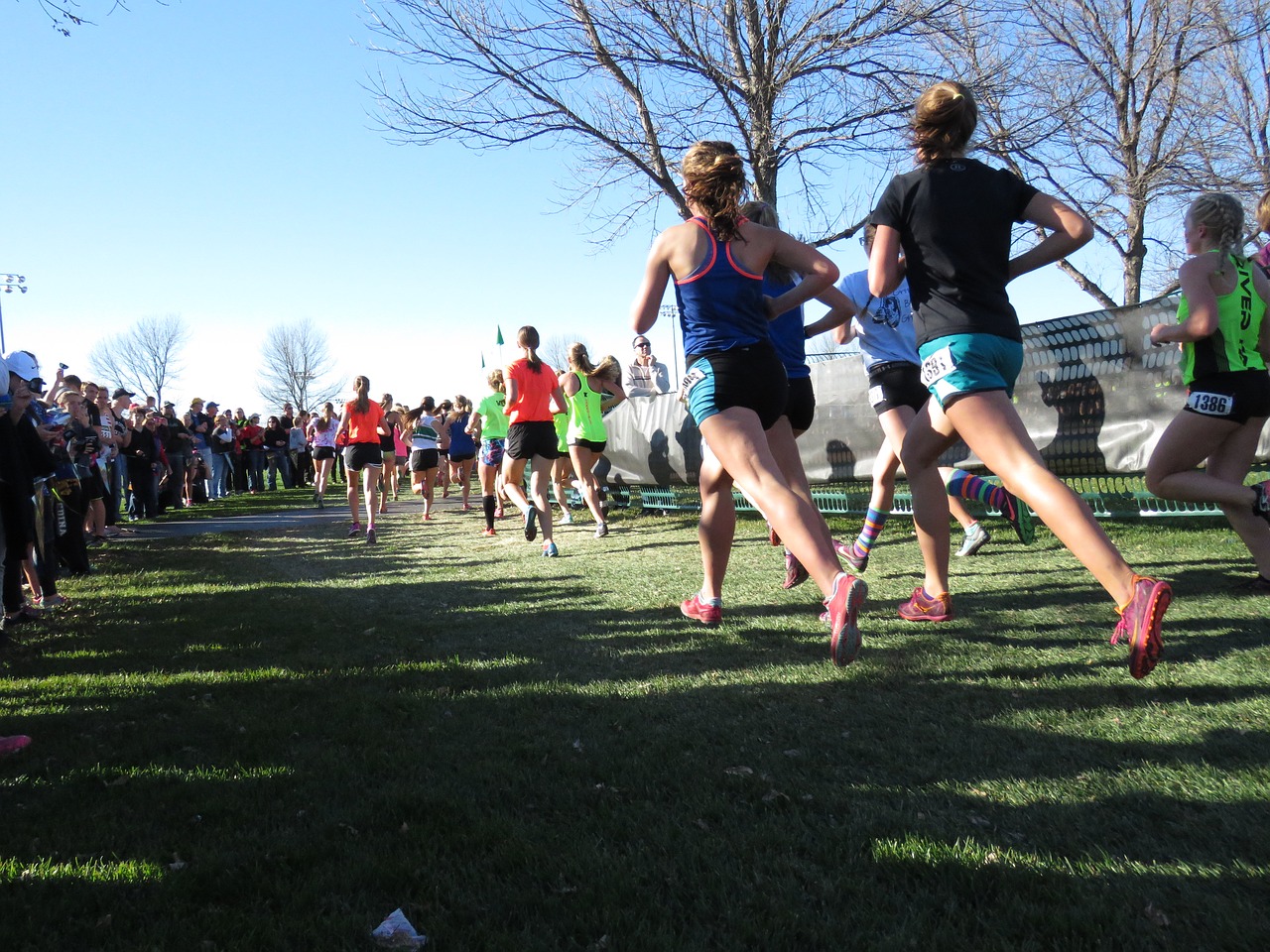
Wow, I am impressed that you do all this! It’s really smart though to know what you have to do to prevent injuries. Over the years I’ve learned that I can’t handle very high mileage so I only run 3x per week and I do strength/stretching on the other days.
From reading your latest race report, you’ve definitely got it figured out! Congrats!
Iron Flame calls all book dragons! Violet’s adventures burn with intensity – romance, battles, mysteries. Sequel perfection. Visit ironflamepdf.top to claim your PDF download free! https://ironflamepdf.top/ Iron Flame Pdf Fliphtml5